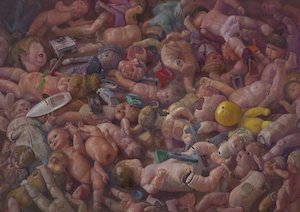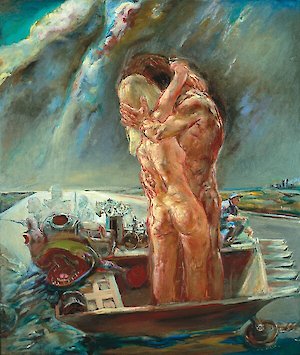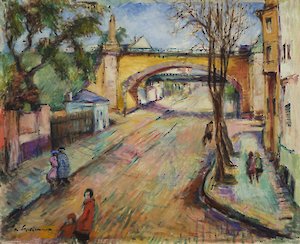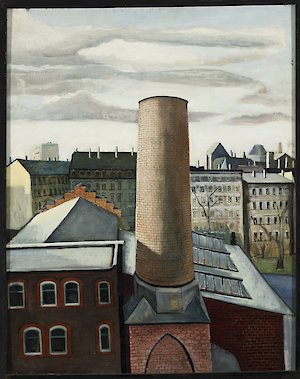Collection revisited: The 'Leipziger Schule'
Collection revisited: The 'Leipziger Schule'
16/03 — 22/08/2021






1962 Bernhard Heisig, then director of the Hochschule für Grafik und Buchkunst Leipzig (HGB) (Academy of Fine Arts Leipzig) initiated the first independent painting class. In 1962, the art historian Lothar Lang designated for the first time the Leipzig School in connection with the academy and its painting. Likewise in 1972, the art critic Eduard Beaucamp introduced Bernhard Heisig, Wolfgang Mattheuer, Gerhard Kurt Müller and Werner Tübke under this same title. Later, their students, too, including Arno Rink and Sighard Gille, were designated as representatives of the Leipzig School. present.
Of course the painting tradition in Leipzig did not begin after 1945. Counted among the most important forerunners of the Leipzig School are Max Schwimmer, Kurt Massloff, Gabriele Meyer-Dennewitz, Kurt Magritz, Ernst Hassebrauk and Elisabeth Voigt.
In contrast to the abstract, non-objective painting that established itself in West Germany, what connects the artists assigned to the Leipzig School is figurative depiction. Their works are characterized by distinct, individually diverse forms of expression that draw on realism of the late 19th century and modern art. Their unifying aim was to find forms of expression that were realizable within the cultural and political ideas of the GDR, but which nonetheless dealt with pressing themes of the time. While the work of Gudrun Brüne, Sighard Gille and Bernhard Heisig is more expressive, the work of Wolfgang Mattheuer, Ulrich Hachulla, Doris Ziegler and Volker Stelzmann appears objective and realistic, and that of Angelika Tübke and Werner Tübke even as early modern. Despite these stylistic differences, they take up similar themes and motifs: the city of Leipzig with its industrially influenced architecture, individual and group portraits, but also politically charged themes such as the tragic figure of Icarus and historical events such as the military coup in Chile in 1973. Mythological and Christian themes along with languages of form appear in the painting of Petra Flemming, Bernhard Heisig and Wolfgang Peuker.
With the Leipzig School as an important focus of the collection, the MdbK acquired works by Leipzig painters early on. But also works by the forerunners and subsequent artist generations form an important component of the collection.

